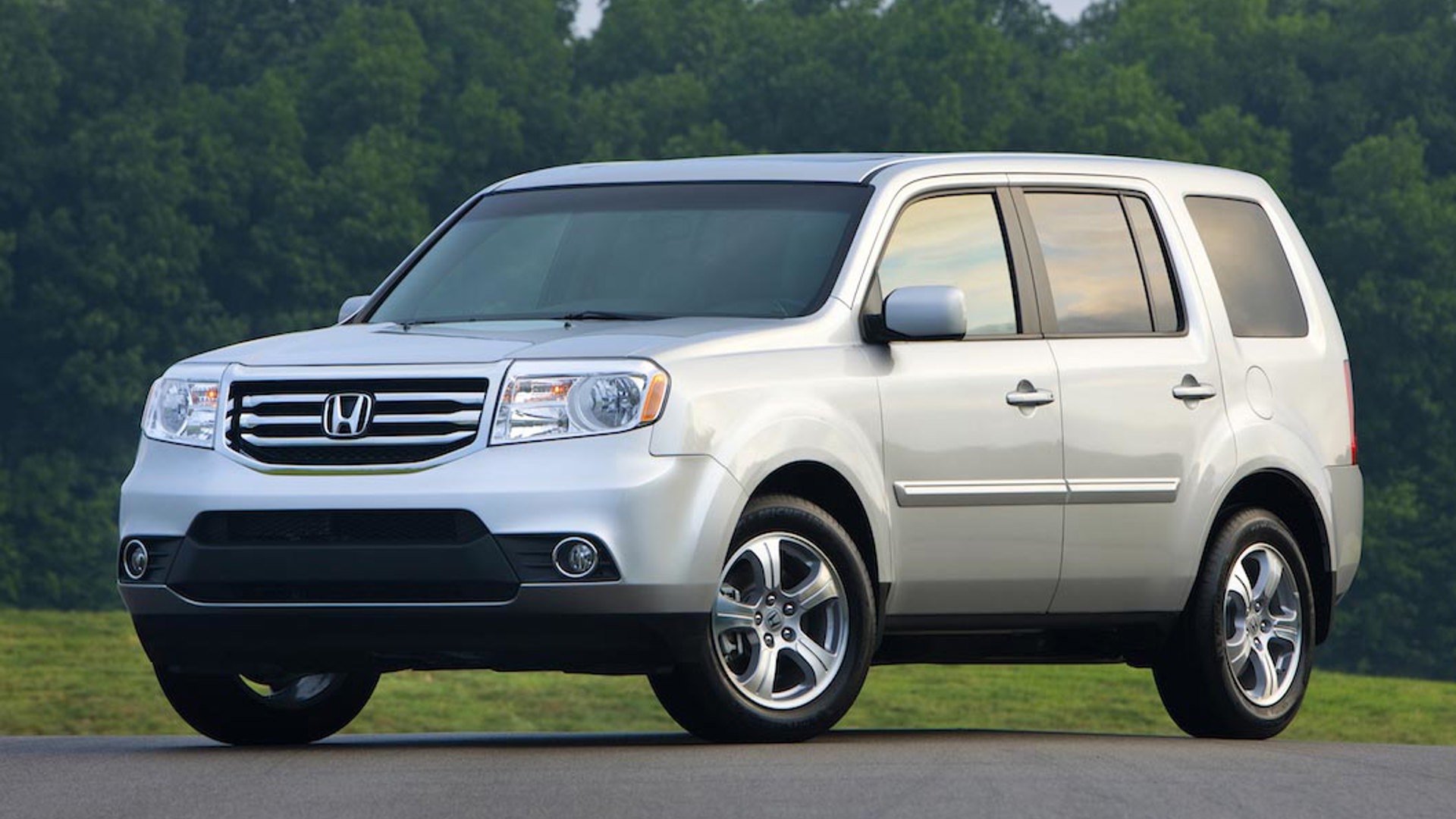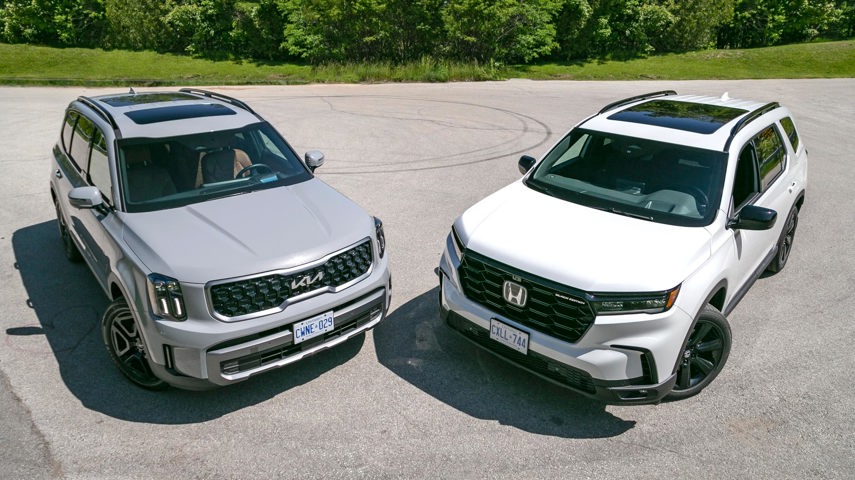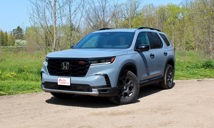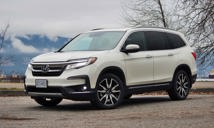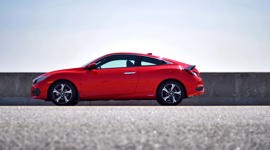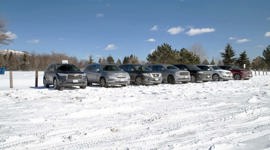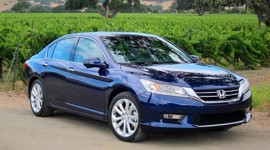Vehicle Type
Crossover SUV
History/Description
Honda phased out and replaced their first-generation Pilot for model-year 2009 with a new model that packed updated styling, technology, feature content and an even bigger body. Longer, wider and taller than the original machine, the new-for-2009 eight-passenger Pilot received a welcome makeover to help it stand out in a market jammed with increasingly fierce competitors, including comparable machines from Toyota, Nissan, Chevrolet and Ford.
Just like the last generation, power comes from a 3.5L V6 engine. Horsepower was modestly increased to 250, a gain of six ponies. Honda’s Variable Cylinder Management (VCM) function and i-VTEC (Valve Timing Electronic Control) system were on board to keep the mill running as economically as possible. Most models in the used market will be AWD or 4WD, featuring Honda’s self-activating four-wheel drive system with available locking mode for enhanced traction. Some units were front-wheel drive. All models got an automatic transmission.
LX and SE models were more basic in terms of feature content, with the Pilot EX-L and Touring models taking a place at the top of the range.
What Owners Like
Pilot owners tend to rate a multitude of characteristics highly, including seat comfort, abundant storage facilities, overall flexibility, a great driving position, confident all-surface traction and an overall blend of go-anywhere, anytime size, flexibility and capability.
What Owners Dislike
Gripes include a learning curve to the voice commanded systems (if equipped), cramped third-row seats, and rougher and louder-than-expected ride in some models.
Here’s a look at what some owners are saying on autoTRADER.ca.
Common Issues
Some owner complaints have surfaced online regarding the durability of the Pilot’s leather seating, especially in the rear rows. Shoppers are advised to check for signs of cracking, ripping or abrasion in the leather, if equipped, where the seat bottom meets the seatback, as some owners have reported damaged caused by folding the seats down and placing cargo on top, which compresses the leather and may cause issues. Here’s a little more reading.
Other durability complaints centre around the brakes, with numerous owners reporting much shorter-than-expected life to brake system components. Be sure to feel for a throbbing pulsation in the brake pedal during light to moderate stops in the Pilot you’re considering, which is a sign that the rotors are warped and that the braking system is in need of attention. If in doubt, ask a mechanic to take a closer look.
While the Pilot is on your mechanic’s hoist, ask for an inspection for signs of leaks, especially around the radiator, transmission cooler lines, transmission and rear differential. Any of these should be relatively easy to spot on a pre-purchase inspection. The Pilot’s suspension should also be inspected, especially for signs of excessive wear to the lower front control arm bushings. If these are cracked or appear to be leaking, they’ll need to be replaced. Here’s some more information.
Check all on-board features and electronics, making double sure the motorized seat adjusters, all windows and locks, the rear-seat climate control, remote keyfob and sunroof all work as expected.
Some owners have reported a growling sound and vibration from the Pilot’s engine compartment when it shifts into ECO mode, deactivating un-needed cylinders. Drive on a flat surface with the throttle applied very lightly to coax the Pilot into this mode, and note any unwelcomed vibrations or sounds. The issue appears to be caused by the electronic motor mounts, which adjust themselves to compensate for the natural vibrations caused when an engine deactivates some cylinders. Though it’s unclear how widespread this issue is, some owners have had luck with new computer software uploaded into the Pilot by a dealer, which re-calibrates how the system operates in ECO mode. Some more info.
Note that some owners have reported issues with oil consumption, and that some haven’t. It’s unclear exactly what’s causing the issue, though shoppers are advised to check the oil level and condition of the model they’re considering, continue to monitor it throughout its life, and be sure to change the oil with only the grade and viscosity specified in the owner’s manual.
Be wary of modifications on the Pilot you’re considering. Though Pilot isn’t a commonly modified vehicle, a mechanic should have a look to confirm that any upgrades were made with high-quality parts and workmanship. Intake and exhaust upgrades are generally safe, though any suspension modifications, el-cheapo aftermarket wheels or auxiliary lighting / wiring could be cause for concern.
Finally, plan and budget for a full fluid change, replacing engine oil, coolant, transmission fluid, transfer case, brake, steering and differential fluids, if you’re unsure of the service history of the model you’re considering. The owner’s manual lists fluid requirements, and if it’s not in the glove-box, a quick call to the selling dealer’s parts counter will set you straight.
The Verdict
Most of the Pilot’s commonly-reported issues will be easy for test-drivers, or their mechanic, to spot on a test-drive and pre-purchase inspection. If the used Pilot you’re considering gets a clean bill of health, you’re well on your way to enjoying a spacious, flexible and capable family hauler.
Here’s a list of recalls
Crash Test Results
National Highway Traffic Safety Administration (NHTSA): 4/5 Stars
Insurance Institute for Highway Safety (IIHS): 2012 Top Safety Pick
